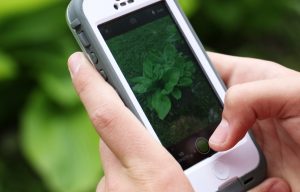3.2 Community Science and Conservation
Community science significantly helps conservation efforts by involving the public in collecting large-scale, long-term data crucial for monitoring ecosystems and wildlife populations. This extensive data collection enables scientists to identify species at risk, understand the impacts of environmental changes, and develop effective conservation strategies. Community science participants also develop a greater awareness and appreciation for nature, making them more likely to engage in and support conservation initiatives.
iNaturalist, a community science database, plays a significant role in conservation. iNaturalist allows users to document and share observations of local species, with photos or sound recordings to verify the species. With millions of observations and growing, this is Canada’s largest community science dataset and could never have been created by researchers alone. iNaturalist provides data scientists and conservationists use to track biodiversity trends and inform conservation strategies. iNaturalist allows thousands of sightings of species, including species at risk, that would never have been documented or shared otherwise.
iNaturalist data is used in many ways:

- The Committee on the Status of Endangered Wildlife in Canada incorporates iNaturalist data into their assessments when determining whether a species is at risk of extinction
- iNaturalist observations are used to help map critical habitat for endangered and threatened species
- iNaturalist is used to locate species at risk for collecting by conservationists for breeding and reintroduction programs
- Species never before observed in Canada have been found because of iNaturalist
- Invasive species can be tracked and monitored using iNaturalist data to help identify locations where interventions may be required
- Hundreds of scientific publications include iNaturalist data
(iNaturalist, n.d.).
Additionally, the database is publicly accessible, so anyone can use it to learn what’s living in their own communities. iNaturalist’s image recognition software also teaches people what they are observing. Knowing what species live around you can make you more apt to want to conserve them.
Reflection
Do you know what species live in your own community? How many of these species would you be able to identify if you saw them outside your own home?
Take a few minutes and explore the iNaturalist observations in your own community. Open iNaturalist on your phone or computer, go to “Explore,” then zoom in on your neighbourhood on the map to see what observations have already been made near you.

